Table of Contents
- What is the Chili Hotness Chart?
- The Science Behind Spice: Understanding SHU
- A Visual Guide: The Ultimate Chili Hotness Chart
- 7 Practical Tips for Using the Chili Hotness Chart Like a Chef
- Chili Showdown: Comparing the Heat Levels of Popular Peppers
- Buying Guide: Choosing the Right Chili for Your Needs
- Frequently Asked Questions About Chili Heat Levels
- Final Thoughts: Embrace the Burn
What is the Chili Hotness Chart?
The chili hotness chart, based on the Scoville Heat Unit (SHU) scale, measures the spiciness of chili peppers. Developed by Wilbur Scoville in 1912, the scale quantifies capsaicin concentration to help cooks and food enthusiasts understand pepper heat levels. This guide provides a comprehensive overview of the Scoville scale, a detailed pepper comparison chart, and practical tips for using chili peppers safely and effectively in cooking.
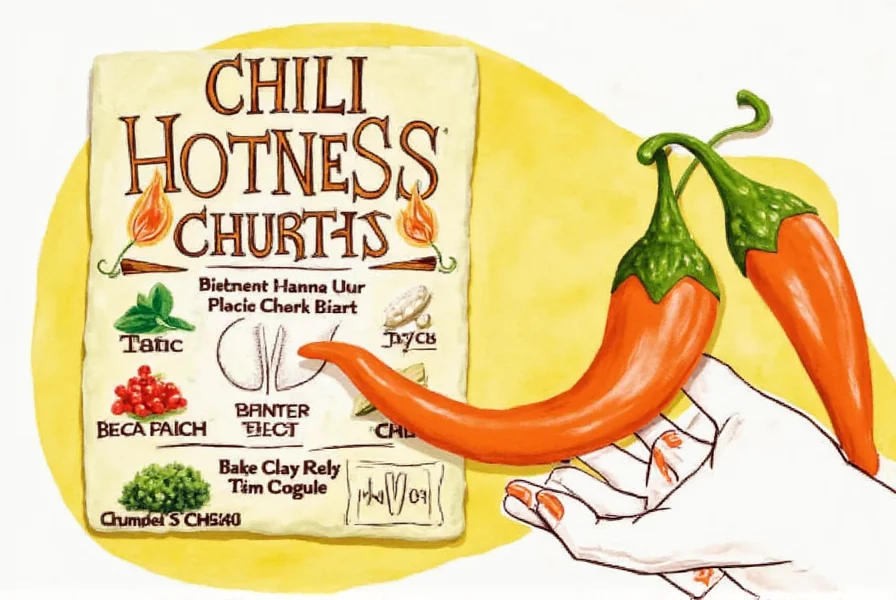
The Science Behind Spice: Understanding SHU
Before we jump into the chart itself, let's talk science. The Scoville Heat Unit (SHU) was developed by Wilbur Scoville back in 1912 as a way to measure the spiciness — or pungency — of chili peppers. In its original form, it involved diluting chili extract until the heat could no longer be tasted by a panel of tasters. The more dilution required, the higher the SHU rating.
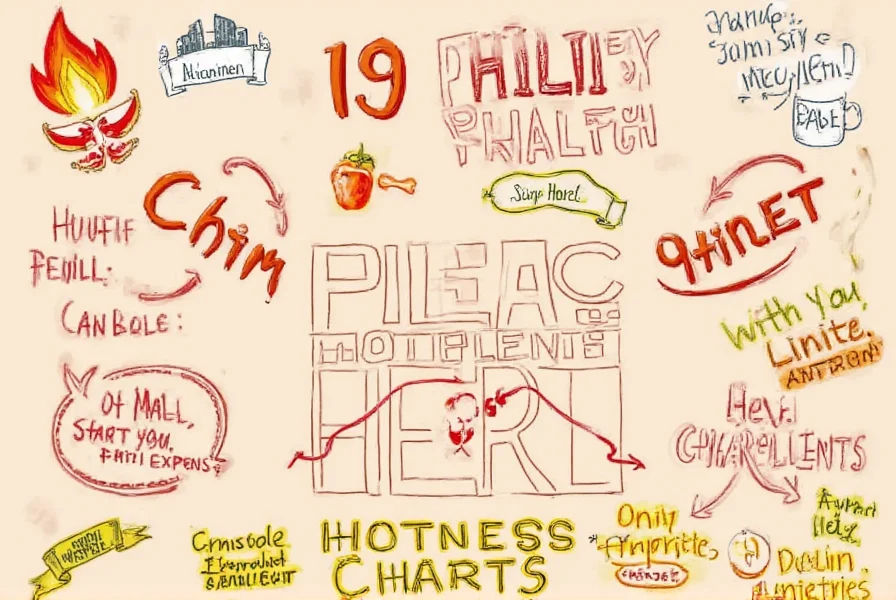
Today, high-performance liquid chromatography (HPLC) is used to measure capsaicin content, which gives us the modern SHU values we rely on. Capsaicin is the compound responsible for that fiery sensation, and different chilies pack varying amounts of it. Here's a quick breakdown:
- Bell Pepper: 0 SHU (totally safe!)
- Jalapeño: 2,500–8,000 SHU
- Habanero: 100,000–350,000 SHU
- Carolina Reaper: Over 1,500,000 SHU (handle with care!)
A Visual Guide: The Ultimate Chili Hotness Chart
Here's where things get exciting! Below is a comprehensive visual chili hotness chart to help you quickly compare and contrast popular peppers from around the globe.
| Pepper Name | Scoville Heat Units (SHU) | Description |
|---|---|---|
| Bell Pepper | 0 | Mild and sweet; perfect for salads or roasting |
| Poblano | 1,000–2,000 | Used in Mexican cuisine; becomes pasilla when dried |
| Jalapeño | 2,500–8,000 | Classic Tex-Mex flavor; often pickled or stuffed |
| Serrano | 10,000–23,000 | Smaller than jalapeños but packs more punch |
| Cayenne | 30,000–50,000 | Frequently used in powdered form for sauces and marinades |
| Thai Bird's Eye | 50,000–100,000 | Tiny but super spicy; common in Southeast Asian dishes |
| Habanero | 100,000–350,000 | Fruit-forward heat with floral undertones |
| Naga Morich | 1,000,000+ | Also known as Dorset Naga; originated in Bangladesh |
| Carolina Reaper | 1,500,000–2,200,000 | World's hottest pepper according to Guinness World Records |
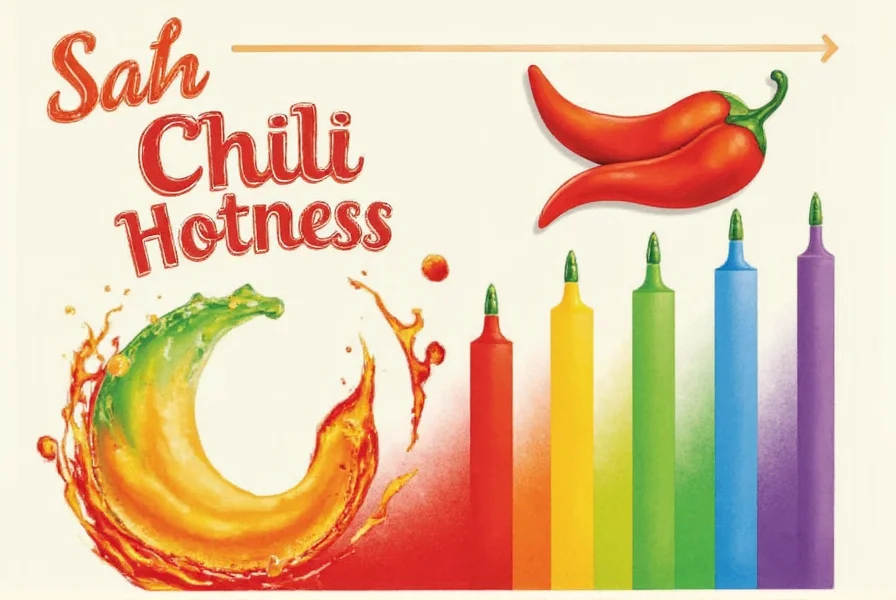
7 Practical Tips for Using the Chili Hotness Chart Like a Chef
Now that you've got the basics down, here are seven pro-level tricks to make the most of the chili hotness chart in your cooking adventures:
- Start Low and Go Slow: Especially if you're new to spice, begin with milder peppers and gradually work your way up the heat ladder.
- Remove Seeds and Membranes: Most of the heat is concentrated in these parts, so removing them reduces overall spiciness.
- Pair With Cooling Ingredients: Yogurt, sour cream, lime juice, or even a splash of milk can soothe the burn without compromising flavor.
- Use Gloves When Handling Hot Peppers: Capsaicin can irritate skin and eyes. Don't skip the gloves!
- Soak in Alcohol or Vinegar: If you accidentally touch a hot pepper and feel the sting, soak your hands in alcohol or vinegar to neutralize the oils.
- Balance Flavors With Acid or Sweetness: Add a pinch of sugar or a squeeze of citrus to balance out intense heat in dishes.
- Label Your Dishes: Always tell guests or family members how spicy something is. A surprise inferno can ruin a good meal.
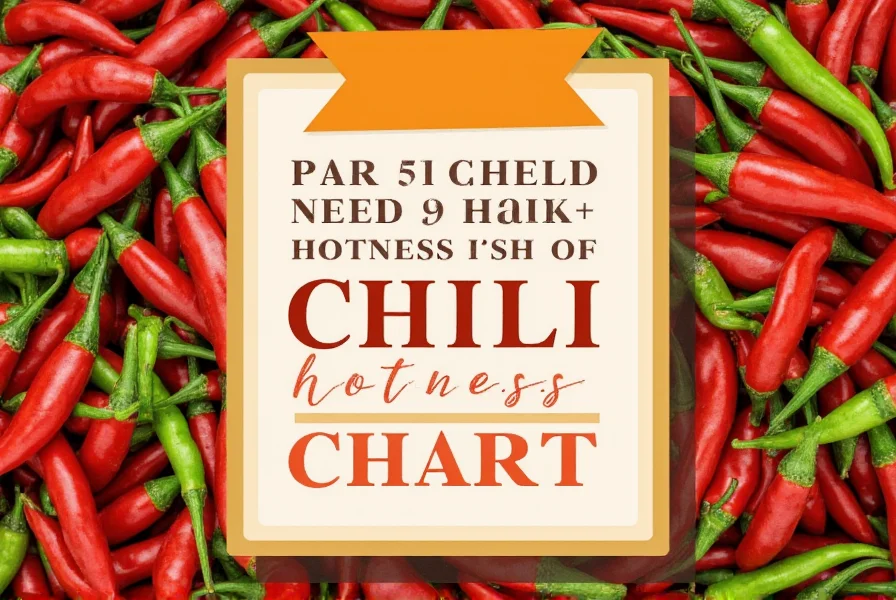
Chili Showdown: Comparing the Heat Levels of Popular Peppers
Let's break it down further and compare some of the most commonly used peppers in home kitchens and professional settings alike. Here's a quick side-by-side comparison:
| Pepper | Heat Level | Best For | Flavor Profile |
|---|---|---|---|
| Bell Pepper | Very Mild | Stuffing, grilling, raw use | Sweet, earthy |
| Jalapeño | Moderate | Tacos, nachos, salsas | Grassy, slightly smoky |
| Habanero | Extremely Hot | Hot sauces, Caribbean dishes | Fruity, tropical, floral |
| Ghost Pepper | Ultra-Hot | Extreme heat challenges, infusions | Earthy, smoky |
| Carolina Reaper | Super Ultra-Hot | World record attempts, daring recipes | Chocolatey, fruity, floral |

Buying Guide: Choosing the Right Chili for Your Needs
Shopping for fresh or dried chilies can be overwhelming with so many options available. Here's a handy guide to help you select the best pepper for your next dish:
- For Beginners: Stick with poblano or Anaheim peppers. They're mild and versatile.
- For Everyday Cooking: Jalapeños and serranos offer a balanced kick and go well with almost anything.
- For Authentic Flavor: Thai bird's eye or Szechuan peppercorns bring authentic heat and complexity to regional dishes.
- For Serious Heat Lovers: Habaneros and ghost peppers are great for homemade hot sauces or adventurous meals.
- For the Daredevils: Carolina Reapers or Trinidad Moruga Scorpions are not for the faint-hearted. Use sparingly!
When Buying Fresh Chilies:
- Look for firm, shiny skin without wrinkles or soft spots.
- Darker green peppers tend to be milder, while red or orange ones are usually hotter.
- Store in a paper bag in the fridge for up to a week.
When Buying Dried Chilies:
- Choose whole dried chilies over crushed unless specified otherwise.
- Avoid those that look brittle or faded — they've lost potency.
- Keep them in an airtight container away from light and moisture.
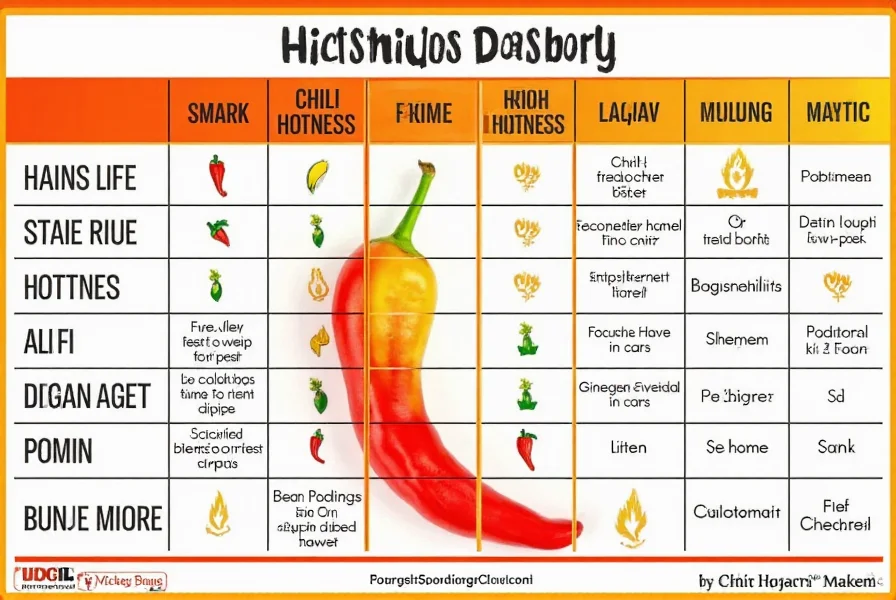
Frequently Asked Questions About Chili Heat Levels
What is the Scoville scale and how does it work?
The Scoville scale measures the pungency (spiciness or "heat") of chili peppers. It's expressed in Scoville Heat Units (SHU), which represent how much a chili extract must be diluted before the heat is no longer detectable. For example, a bell pepper measures 0 SHU, while the Carolina Reaper measures over 1.5 million SHU. Modern testing uses high-performance liquid chromatography to measure capsaicin content rather than human taste testers.
How can I reduce the heat of a chili pepper when cooking?
You can reduce heat by removing the seeds and white membranes (placenta) where most capsaicin is concentrated. Soaking chopped peppers in salt water or vinegar for 15-30 minutes can also draw out some heat. Adding dairy products like yogurt or sour cream to your dish can help neutralize capsaicin since it's fat-soluble. Remember that cooking doesn't destroy capsaicin—it actually helps distribute the heat more evenly throughout your dish.
What's the difference between mild, hot, and extremely hot peppers?
Mild peppers (0-5,000 SHU) like bell peppers and poblanos provide flavor without significant heat. Hot peppers (5,000-100,000 SHU) like jalapeños and serranos offer noticeable heat that enhances dishes. Extremely hot peppers (100,000+ SHU) like habaneros and ghost peppers deliver intense heat that should be used sparingly. The difference isn't just in heat level but also in flavor profiles—milder peppers tend to be sweeter, while hotter varieties often have complex fruity or floral notes.
How do I handle extremely hot peppers safely?
Always wear gloves when handling extremely hot peppers like habaneros, ghost peppers, or Carolina Reapers. Work in a well-ventilated area as capsaicin vapors can irritate your eyes and respiratory system. Never touch your face while handling hot peppers. If you get capsaicin on your skin, wash with soap and water, then apply a milk-soaked cloth to soothe the burn. For eye exposure, flush with water for several minutes and seek medical attention if irritation persists.
Why do some extremely hot peppers taste fruity or floral?
Peppers contain various flavor compounds in addition to capsaicin. Many extremely hot peppers like habaneros and scorpion varieties have high concentrations of esters and other volatile compounds that create fruity, floral, or tropical flavor notes. This is why many hot sauces balance intense heat with complementary flavors—the heat sensation and flavor profile are actually separate characteristics of the pepper.
What should I do if I eat something too spicy?
Dairy products like milk, yogurt, or sour cream are most effective because capsaicin is fat-soluble. Avoid drinking water as it spreads the capsaicin around your mouth. Sugar or honey can also help counteract the heat. Bread or rice can absorb some of the capsaicin. For extreme cases, a small amount of alcohol (like beer or spirits) can help dissolve the capsaicin, though this might initially increase the burning sensation. The burning will subside over time as your body processes the capsaicin.
Does cooking affect the heat level of peppers?
Cooking doesn't destroy capsaicin (which is heat-stable up to about 400°F/204°C), but it does distribute the heat more evenly throughout your dish. Roasting can mellow the sharp heat of some peppers while enhancing their natural sweetness. Simmering peppers in liquid can transfer heat to the entire dish. Interestingly, adding acid (like lime juice or vinegar) can sometimes make peppers taste hotter because acid helps release more capsaicin.
Final Thoughts: Embrace the Burn
The chili hotness chart isn't just a random list of peppers — it's a roadmap to flavor, adventure, and fun in the kitchen. Whether you want to spice up a boring weekday dinner or impress friends at a cookout, knowing your SHUs can take your cooking game to the next level.
So don't fear the heat — learn it, respect it, and then play with it like a pro. And remember, every great meal starts with the right amount of spice. Now go forth and season boldly!

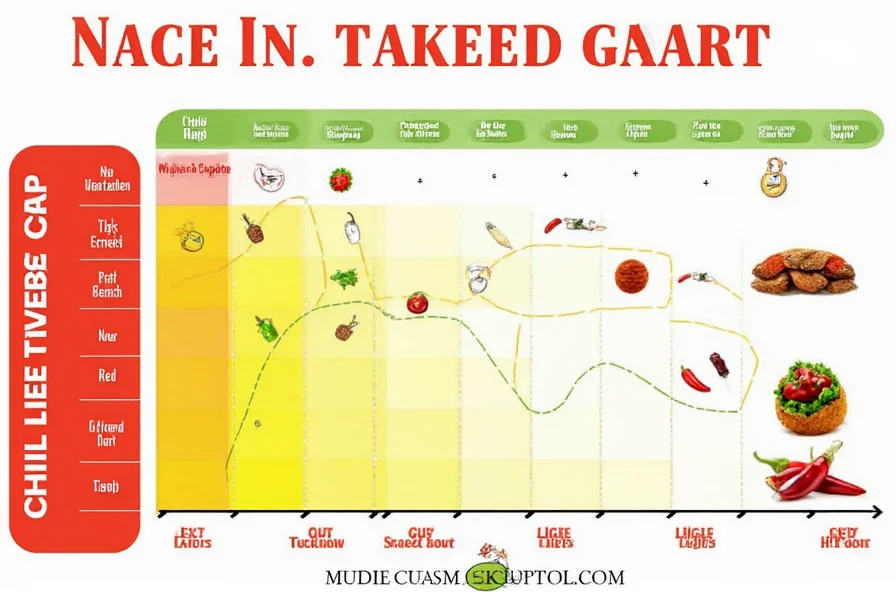









 浙公网安备
33010002000092号
浙公网安备
33010002000092号 浙B2-20120091-4
浙B2-20120091-4